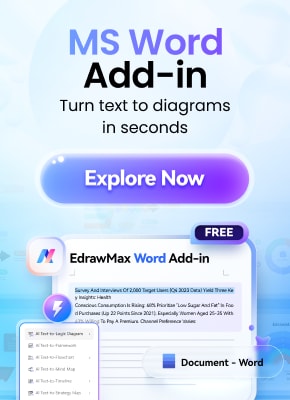Data structures and algorithms (DSA) form the backbone of coding interviews and software engineering roles today. As development complexity rises, efficient code requires selecting and implementing the appropriate algorithms and data organization mechanisms.
This guide explores the significance of DSA and provides a multi-paradigm academic and applied understanding to set up success as a modern programmer.
In this article
Part 1: What is DSA Full Form in Coding?

Wondering what is the DSA's full form in the coding world? Well, DSA stands for "Data Structures and Algorithms."
Data structures offer ways to organize information efficiently to allow for faster searching, sorting, and other operations. Algorithms describe computational processes or recipes to transform input into desired outputs.
By applying the correct existing algorithms or developing new ones, programmers utilize data structures optimally to create high-performance software and ace interviews.
Part 2: Brief Overview of DSA in Java
Java utilizes classes, objects, references, and interfaces to implement Data Structures seamlessly. Its strict typing and object-oriented nature make Java a great teaching language. Arrays act as building blocks for other data structures. Stack, Queue, and Linked List classes power everyday Java development. Hash and Tree structures enable rapid sorting, searching, and real-world modeling.
Algorithms like recursion, divide & conquer, greedy, backtracking, branch & bound, and graph networks energize analyses. Practice sections of LeetCode and Hackerrank contain hundreds of Java algorithm challenges.
- Read also: Java Data Structures and Algorithms
Part 3: Steps to Learn DSA From Scratch

- Review Core Programming Concepts - Start with variables, data types, conditionals, loops, functions, classes, pointers, etc. Strong fundamentals enable learning complex DSA easier.
- Learn Time & Space Complexity Analysis - Asymptotic runtimes using Big O Notation measure efficiency critical for comparing DSA options.
- Study Arrays - Foundational data structure with blazing-fast lookup and value storage. Manipulations like insertion and deletion take longer.
- Progress to Stacks, Queues, Linked Lists - LIFO and FIFO data structures with tradeoffs vs arrays. Pointers manage the next links.
- Implement Trees, Tries, Heaps, Hashes - Hierarchical trees, prefix tries, min/max heaps, and key-value hashes manage all kinds of real-world data.
- Analyze Sorting/Searching Techniques - Algorithms like quicksort, mergesort, and binary search drastically improve order and retrieval.
- Review Graphs and Advanced Topics - Model networks/relationships using vertices and edges. Solve famous NP-complete problems.
Consistency in practicing coding interview questions and analyzing complexities prepares for DSA mastery.
Part 4: What is the Best Programming Language for DSA
While DSA principles remain language-agnostic, some options make implementation easier.
- Java - Strict typing, OOP design, vast libraries.
- Python - Rapid prototyping, built-in DSAs.
- JavaScript - Client-side DSA experience.
- C++ - Pointers and memory control.
- C - Teaches memory allocation fundamentals.
Ultimately, recognizing runtimes and optimal data representation trump language syntax.
Part 5: Major Topics Covered in the Python DSA Course
Here is an overview of key concepts covered when learning DSA with Python:
- Array/List Methods: Append, insert, pop, del - add/delete elements.
- Stack/Queues: LIFO, FIFO data structure operations.
- Linked List: Singly, doubly, circular implementations.
- Binary Search Trees: Rapid O(LogN) search and insertion.
- Heaps: Min/max heapify operations, heapsort.
- Hash Tables: Key-value pair mapping, collisions.
- Sorting Algorithms: Bubble, selection, insertion, merge, quick sort.
- Recursion: Base cases, problem decomposition.
- Basic Graphs: Weighted, directed representations + traversals.
- Dynamic Programming: Overlapping subproblems, memoization.
- Object-Oriented Design Patterns
Practice key Pythonic DSAs like dictionaries, sets, and list comprehensions to prepare for efficient prototyping.
Part 6: Create a Programming Flowchart Using EdrawMax
EdrawMax proves an invaluable tool for planning program logic and structuring code. Its drag-and-drop interface creates programming flowcharts, UML diagrams, mind maps, and more with simplicity.
Such planning and visualization boost productivity and enable collaborators to visualize code quickly. Features like symbols libraries, auto-layouts, and shareable team spaces demonstrate why EdrawMax makes diagramming programming a breeze!
Here are the steps for creating a simple programming flowchart using EdrawMax:
Step 1:
Launch the EdrawMax application on your device. In the EdrawMax dashboard, navigate to the "Flowchart" category or use the search bar to find flowchart templates. Choose a template that suits your needs or start from scratch with a blank canvas.

Step 2:
Use the shapes and symbols provided in the toolbox. Drag and drop shapes onto the canvas to represent different elements of your program, such as start/end, processes, decisions, inputs/outputs, etc.

Step 3:
Use arrows or connector tools to link the shapes and create the flow of your program. Click and drag from one shape's connector point to another to establish connections.

Step 4:
Customize the flowchart by changing colors, sizes, fonts, and styles to make it more visually appealing and easier to follow. Use the formatting options available in the toolbar.

Step 5:
Once you've completed your flowchart, save your work. EdrawMax allows you to save your file in various formats like EdrawMax project files, image formats (PNG, JPEG, etc.), PDF, or other compatible file types.

EdrawMax offers various features and functionalities, so feel free to explore and utilize the tools available to create a flowchart that best represents your programming logic or process.
Conclusion
This overview of DSA concepts across languages, paradigms, data structures, algorithms, and teaching tools arms beginners and professionals alike with an actionable learning plan. Paired with integrated visual mappings in EdrawMax, programmers can meet rising digital complexities with clean, efficient designs. DSA mastery proves foundational; so start implementing core practices from basics to advanced computer science theory for future-proof development skills.




